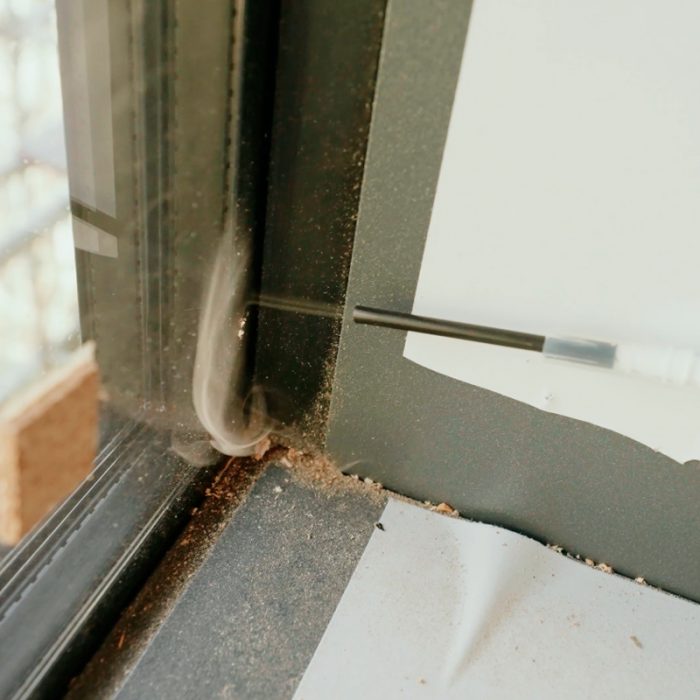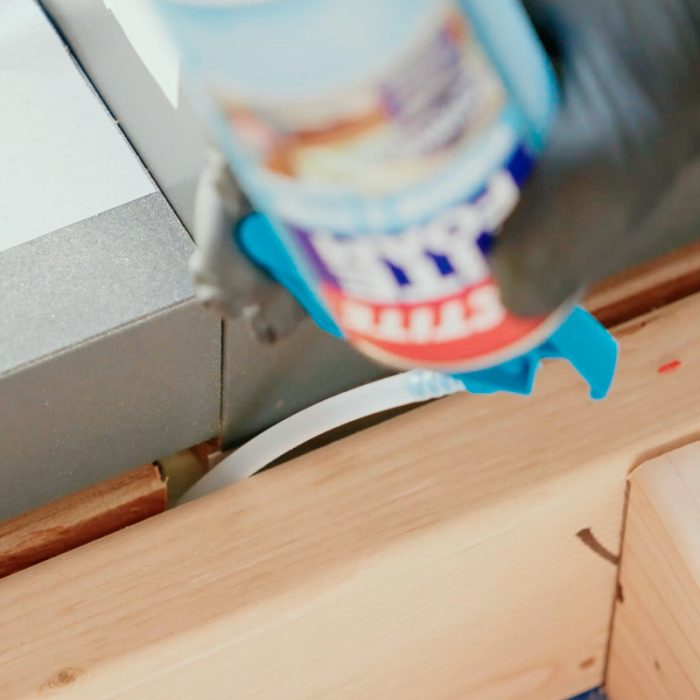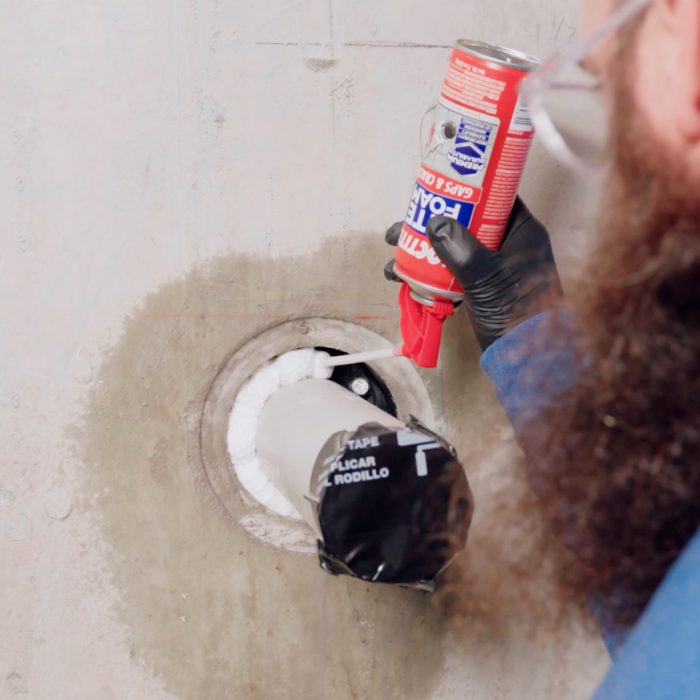Hitting High-Performance Airtightness Standards
Builder Ben Bogie chases and seals air leaks with Loctite TITE FOAM insulating foam sealant in this high-performance home.
We’re on-site at an ultramodern high-performance home that my company BPC Green Builders is constructing. Part of the program directive for this house is that it has to hit very rigorous airtightness standards. In order for us to hit those numbers, we do blower-door-guided air-sealing. We’ll then go downstairs into the basement to investigate any penetrations through the envelope, and then we’ll head outside to seal up the continuous insulation.
Finding air leaks
We’ll use our blower door to pressurize the building, and then we’ll use theatrical smoke and fog to find some of these air-leakage pathways that we can’t easily see with just our eyes. From this, we know we have some areas to address around the curtain wall.
 |
 |
In order to address these, we’re going to use Loctite TITE FOAM Window & Door so it doesn’t expand too much and distort any of the components that are part of the assembly. I really like about the straw on this product because it allows me to get the foam deep into the assemblies so that I can seal really well versus just doing a surface seal.
Sealing basement penetrations

In these locations, we’ve chosen TITE FOAM Gaps & Cracks because we have a less than 1-in. gap that we’re trying to fill. In areas that have difficult-to-bond-to materials or that are in low temperature or humidity, you can add a little bit of moisture to the equation and that’ll help the foam bond better and speed up your curing time.
Continuous exterior insulation
Lastly, we move outside of the building seal the continuous insulation. Before we do any of our applications, we want get any loose debris and dust off of the surface. The continuous insulation on the outside of the building allows us to deliver a building that is durable, healthy, and energy efficient. If we don’t pay attention to sealing, then we can have accumulations of moisture in the assembly.
Using TITE FOAM Gaps & Cracks again, we pay close attention to make sure that our spaces are filled and that we have no missing areas. After the foam cures, we’ll come back and cut it flush so that our next pieces will fit in tightly.
We often turn to TITE FOAM because it stays elastic over time, which we trust is going to give us the most lasting and durable installation we can get.
RELATED STORIES
Pre-Insulation Foam Air-Sealing Strategies
Why You Need Blower-Door Testing
Final Air-Sealing for a High-Performance Barndominium


























View Comments
Ben what was that ball bearing like gasket ing (brand?)you had for you pipe penetrations in foundation wall